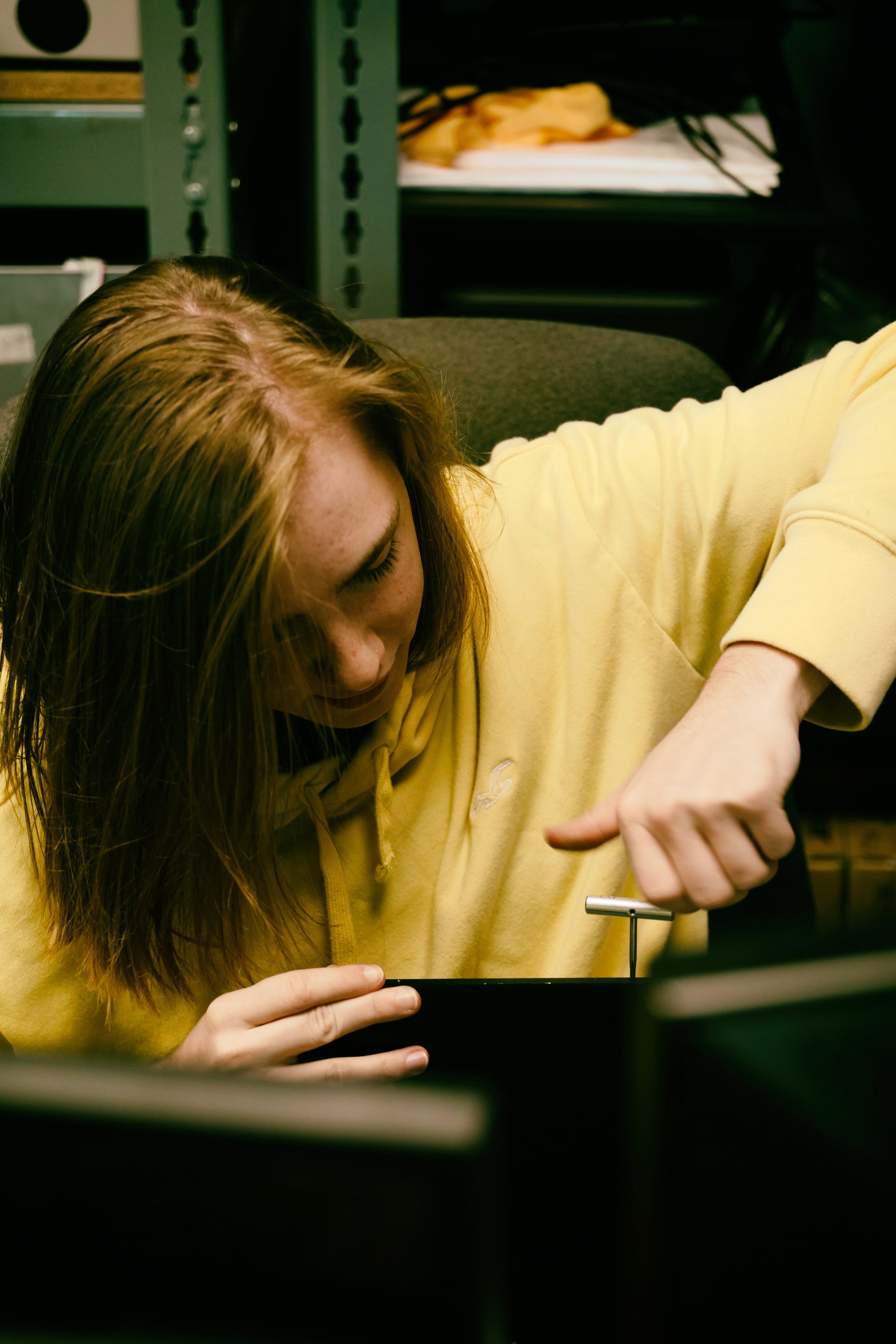Uv/vis/nir Things To Know Before You Buy
Table of ContentsThe Best Guide To Circular DichroismThe Definitive Guide to Uv/visLittle Known Facts About Circular Dichroism.Not known Facts About Circular DichroismGetting The Circular Dichroism To WorkFascination About Circular DichroismCircular Dichroism for BeginnersThe smart Trick of Uv/vis/nir That Nobody is Talking AboutHow Circularly Polarized Luminescence can Save You Time, Stress, and Money.Circular Dichroism Can Be Fun For AnyoneLittle Known Facts About Uv/vis.The Ultimate Guide To Circularly Polarized LuminescenceMore About Spectrophotometers
It is then scanned through the sample and the reference services. Fractions of the event wavelengths are transmitted through, or shown from, the sample and the referral. The resultant light strikes the photodetector gadget, which compares the relative strength of the 2 beams. Electronic circuits transform the relative currents into linear transmission percentages and/or absorbance/concentration worths.The transmission of a reference substance is set as a standard (information) worth, so the transmission of all other compounds are taped relative to the initial "zeroed" substance. The spectrophotometer then transforms the transmission ratio into 'absorbency', the concentration of particular elements of the test sample relative to the initial substance.
Since samples in these applications are not easily offered in large amounts, they are particularly fit to being analyzed in this non-destructive technique. In addition, valuable sample can be conserved by making use of a micro-volume platform where as low as 1u, L of sample is needed for complete analyses. A short description of the treatment of spectrophotometry includes comparing the absorbency of a blank sample that does not consist of a colored compound to a sample which contains a colored substance.
The Of Spectrophotometers
In biochemical experiments, a chemical and/or physical residential or commercial property is selected and the treatment that is used specifies to that home in order to derive more info about the sample, such as the quantity, pureness, enzyme activity, and so on. Spectrophotometry can be utilized for a variety of strategies such as determining optimum wavelength absorbance of samples, identifying optimal p, H for absorbance of samples, identifying concentrations of unidentified samples, and determining the p, Ka of different samples.: 21119 Spectrophotometry is likewise a handy procedure for protein filtration and can likewise be utilized as a method to create optical assays of a substance.
It is possible to understand the concentrations of a two component mixture using the absorption spectra of the standard options of each component. To do this, it is required to know the extinction coefficient of this mixture at two wave lengths and the extinction coefficients of services that consist of the known weights of the two elements.

The Facts About Circularly Polarized Luminescence Revealed
Region. The concentration of a protein can be estimated by measuring the OD at 280 nm due to the presence of tryptophan, tyrosine and phenylalanine.
Nucleic acid contamination can also interfere. This approach needs a spectrophotometer efficient in measuring in the UV area with quartz cuvettes.: 135 Ultraviolet-visible (UV-vis) spectroscopy includes energy levels that delight electronic transitions. Absorption of UV-vis light thrills particles that remain in ground-states to their excited-states. Noticeable area 400700 nm spectrophotometry is utilized thoroughly in colorimetry science.
These curves can be utilized to evaluate a brand-new batch of colorant to inspect if it makes a match to requirements, e
Traditional visible standard spectrophotometers can not detect if spot colorant or the base material has fluorescence. This can make it difficult to manage color concerns if for example one or more of the printing inks is fluorescent. There are two significant setups for visual spectrum spectrophotometers, d/8 (spherical) and 0/45.
Scientists use this instrument to measure the quantity of compounds in a sample. If the compound is more concentrated more light will be soaked up by the sample; within little ranges, the Beer, Lambert law holds and the absorbance in between samples differ with concentration linearly. When it comes to printing measurements 2 alternative settings are typically used- without/with uv filter to manage better the impact of uv brighteners within the paper stock.
Circular Dichroism Can Be Fun For Everyone
Some applications require little volume measurements which can be carried out with micro-volume platforms. As described in the applications section, spectrophotometry can be used in both qualitative and quantitative analysis of DNA, RNA, and proteins. Qualitative analysis can be used and spectrophotometers are used to tape-record spectra of compounds by scanning broad wavelength areas to figure out the absorbance properties (the intensity of the color) of the compound at each wavelength.
Circularly Polarized Luminescence for Dummies
One significant aspect is the type of photosensors that are readily available for various spectral regions, but infrared measurement is likewise challenging since virtually everything releases IR as thermal radiation, specifically at wavelengths beyond about 5 m. Another issue is that numerous products original site such as glass and plastic take in infrared, making it incompatible as an optical medium.
Samples for IR spectrophotometry may be smeared between 2 discs of potassium bromide or ground with potassium bromide and pushed into a pellet. Where aqueous services are to be determined, insoluble silver chloride is utilized to construct the cell. Spectroradiometers, which run practically like the noticeable area spectrophotometers, are created to measure the spectral density of illuminants. 2013. p. 13. Allen, DW; Cooksey, C; Tsai, BK (Nov 13, 2009). "Spectrophotometry". Obtained Dec 23, 2018. Ninfa AJ, Ballou DP, Benore M (2010 ). Basic Laboratory Approaches for Biochemistry and Biotechnology (second ed.). Hoboken: Wiley & Sons. ISBN 9780470087664. OCLC 488246403. Schwedt G (1997 ). The essential guide to analytical chemistry.
Oke, J. B.; Gunn, J. E.
A Biased View of Circularly Polarized Luminescence

1021/ac50048a728. ISSN0003-2700. Ninfa AJ, Ballou DP, Benore M (2015 ). Basic Laboratory Methods for Biochemistry and Biotechnology (3, rev. ed.). Hoboken, NJ: Wiley & Sons. p. 77. ISBN9780470924525. OCLC915641828. "Fully Automatic Double Beam - Atomic Absorption Spectrophotometer (AA 8000)". Laboratory Equipment. Labindia Analytical Instruments Pvt. Ltd. "Spectrophotometry Applications and Basics".
Everything about Circular Dichroism
"Applied Spectrophotometry: Analysis of a Biochemical Mixture". Biochemistry and Molecular Biology Education. Journal of Biochemistry Education.
The 3-Minute Rule for Spectrophotometers
U.S. Department of Commerce National Bureau of Standards special publication; 378. Washington, D.C.: U.S. National Bureau of Standards. p. 2. OCLC 920079.
The process begins with a controlled light that brightens the analyzed sample. In the case of reflection, as this light engages with the sample, some is taken in or discharged. The produced light travels to the detector, which is evaluated, measured, and presented as industry-standard color scales and indices.
Market governing bodies usually define specific metrics for particular items, such as Tomato and Coffee indices. The simplified mathematics appears like this: Where R is the reflection coefficient. All terms are evaluated over the noticeable spectrum from 400 to 700 nm. In the case of transmission, when the light communicates with the sample, it is either taken in, shown, or transmitted.
What Does Spectrophotometers Do?
Examples include APHA (American Public Health Association) for watercolor and purity analysis, ASTM D1500 for petrochemical color analysis, edible oil indices utilized in food, and color analyses of beverages. All terms are evaluated over the noticeable spectrum from 400 to 700 nm.
Image Credit: Matej Kastelic/ Dr. Arnold J. Beckman and his colleagues at the National Technologies Laboratories first developed the spectrophotometer in 1940. In 1935 Beckman established the company, and the discovery of the spectrophotometer was their most ground-breaking innovation.
The 5-Second Trick For Uv/vis/nir
99% accuracy. Over time, researchers kept enhancing the spectrophotometer style to improve its performance. For instance, the UV abilities of the model B spectrophotometer were improved by changing the glass prism with a quartz prism. Eventually, the Design DU was produced, including a hydrogen light and other enhancements. This instrument was used in commercial laboratories, clinics, and chemistry and biochemistry departments.
After 1984, double-beam versions of the device were designed. The addition of external software with the provision of onscreen screens of the spectra was available in the 1990s. Normally, a spectrophotometer is made up of two instruments, particularly, a spectrometer and a photometer. A basic spectrophotometer consists of a light, a monochromator, a collimator for straight light beam transmission, a cuvette to position a sample, and a photoelectric detector.
The Greatest Guide To Spectrophotometers
There are different kinds of spectrophotometers in various sizes and shapes, each with its own purpose or functionality. A spectrophotometer figures out how much light is shown by chemical components. UV/Vis. It measures the distinction in light strength based on the overall quantity of light introduced to a sample and the quantity of beam that goes through the sample option
According to the instrument's design, the sample is positioned between the spectrometer and the photometer. After the light is gone through the sample, the photometer determines its strength and shows the reading. A spectrophotometer is used to identify the concentration of both colorless and colored solutes in a service. This instrument is utilized to determine the rate of a reaction.
Comments on “The Definitive Guide to Spectrophotometers”